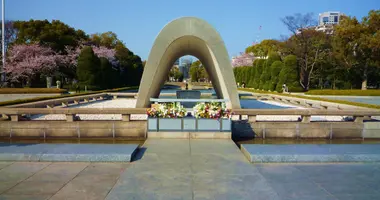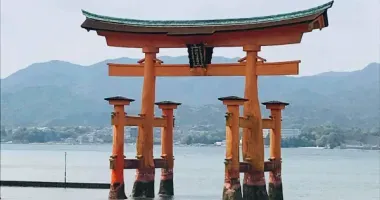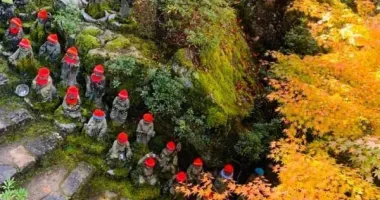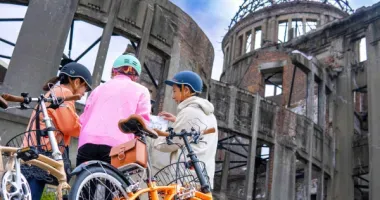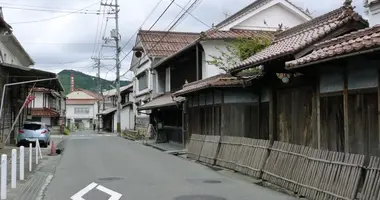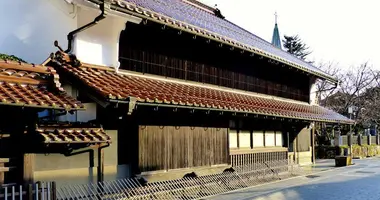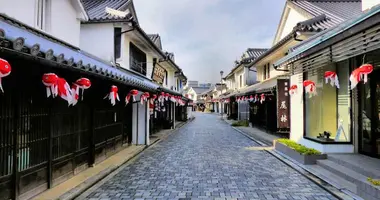Yamaguchi City 山口市
The Old Town Crossroads - A Door to the West
At the south-eastern tip of the island of Honshu, a stone's throw from the southern Kyushu, the city of Yamaguchi sits quietly on the banks of the Ichinosaka river. Rich in history, famous for missionary Saint-Francis-Xavier pass through its streets.
Western Japan Kyoto
Yamaguchi was originally a city built by the very powerful Ouchi clan. This large family from western Japan claimed to be descended from the Baejke aristocracy (18 BC - 660), a Korean kingdom that had great importance in the history of Japan (introduction of Buddhism, construction of Nara) and whose elite would have taken refuge in Japan during the Asuka period (538 - 710).
Between 12th and 14th centuries, the Ouchi makes Yamaguchi an extremely flourishing city, built on the model of Kyoto, and has a rich traditional culture.
Yamaguchi also benefited from the indirect fallout from the Onin War (1467-1477) during which Kyoto is totally ravaged by the struggle between the Hosokawa and the Yamana to become the other artistic capital of the country.
The city is a large influential city welcoming painters as prestigious as Sesshu. Its openness to international trade (with China in particular, then Westerners) also makes Yamaguchi a hub for intercultural exchanges.
A city steeped in Christianity
It is this privileged position which makes Yamaguchi one of the cities where the famous Saint Francis-Xavier - Jesuit missionary of Spanish origin - resided, after being invited by the Ouchi clan in 1551. It is estimated that a thousand Japanese people were baptized by him in Yamaguchi prefecture.
1952 marked the fourth centenary of the death of Saint-Francis-Xavier, in memory of him a modernist Catholic church was constructed in Yamaguchi.
- Read also: Oura Church

Church of St. Francis Xavier of Yamaguchi
Wiki commons
Built in a triangular design, it has on the ground floor of a large garden as well as a museum where are a number of objects related to Christianity (paintings, clothes, medals, statues) as well only maps showing the different routes of Saint Francis Xavier and the rise of Christianity in Japan.
On the upper floor, the church is designed to bring in light from everywhere, a light that passes through large multicolored stained glass windows. Two 50-meter towers flank the church, one carrying a clock, the other a bell tower of 9 bells.
- Read also: Christians at the museum
Activities in Yamaguchi - traditional Japan at your fingertips
This western influence of Yamaguchi should not make us forget that the city is also a perfect example of traditional Japan which delights many visitors.
The 5-story pagoda of Ruriko-ji is there to testify to the pervasiveness of Buddhism in the city. Built-in 1442, it is one of the most imposing in the country along with Horyu-ji (in the vicinity of Nara) and Daigo-ji of Kyoto. This national treasure is nestled within Kozan Park, where we also find:
a museum on the various 5-story pagodas in Japan where these are each represented in miniature
the cemetery of the Mori clan, who reigned over the region during the Edo period (1604-1868),
the Chinryutei tea house where Saigo Takamori planned with other conspirators the fall of the Tokugawa shogunate.
Another must-see in the city is the Joei-Ji temple, best known for its very simple Zen garden created at the request of Lord Mashiro Ouchi by the painter Sesshu, who gave it its name. Sown with pebbles, surrounded by maple and possessing a rock which represents Mount Fuji the garden is perfect place to take a peaceful stroll, several paths having been laid out for this purpose.











